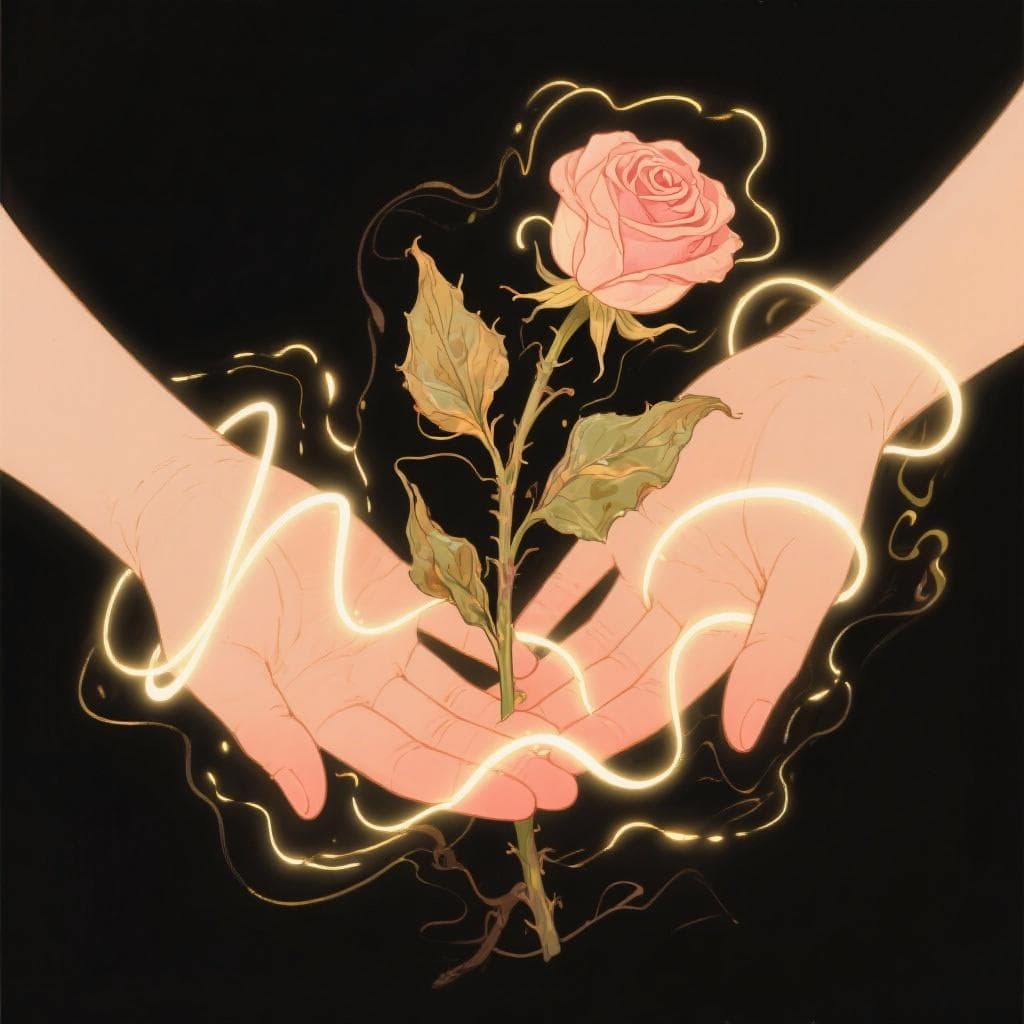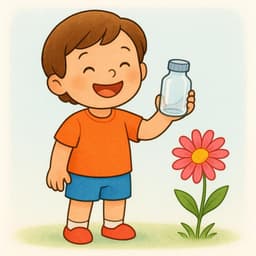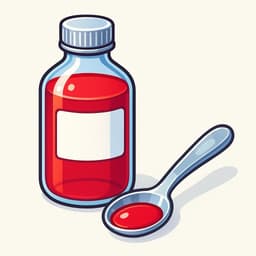"El amor no tiene cura, pero es la única medicina para todos los males."
/el ah-MOR no TYEH-neh KOO-rah, PEH-roh es lah OO-nee-kah meh-dee-SEE-nah PAH-rah TOH-dohs lohs MAH-lehs/
Love has no cure, but it is the only medicine for all ills.
💡 Understanding the Quote
"El amor no tiene cura, pero es la única medicina para todos los males."
🎨 Visual Representation

The quote's paradox: love is depicted as both an overwhelming force and a gentle, healing remedy.
🔑 Key Words
📖 Context
A modern proverb or aphorism with an uncertain origin. It is widely circulated in the Spanish-speaking world and often misattributed to famous authors like Gabriel García Márquez or poets like Pablo Neruda due to its literary quality.
📝 In Action
Después de la ruptura, pensé que no me recuperaría, pero conocerte me salvó. De verdad, 'el amor es la única medicina para todos los males'.
B2After the breakup, I thought I wouldn't recover, but meeting you saved me. Truly, 'love is the only medicine for all ills'.
Mi abuela siempre decía: 'El amor no tiene cura, pero es la única medicina'. Ahora entiendo lo que quería decir.
B2My grandmother always used to say: 'Love has no cure, but it's the only medicine'. Now I understand what she meant.
✍️ About the Author
📜 Historical Context
This is a modern proverb, not an ancient one. Its exact origin is unknown, but its popularity surged with the rise of the internet and social media. The fact that it's often misattributed to great literary figures shows how deeply it resonates with the poetic, romantic sensibilities of Spanish-speaking cultures.
🌍 Cultural Significance
This quote is a cornerstone of modern romantic expression in Spanish. It's found everywhere from social media posts and tattoos to song lyrics and everyday conversations. It perfectly captures a popular cultural view of love as an intense, paradoxical, and ultimately redemptive force that gives meaning to life.
📚 Literary Analysis
The quote's brilliance lies in its central metaphor and paradox. By first calling love an incurable 'illness' ('no tiene cura'), it acknowledges its overwhelming, sometimes painful, nature. It then immediately pivots, declaring it the 'only medicine' ('la única medicina'), elevating it above all other solutions. The use of 'males' (ills, sorrows) instead of a more clinical word like 'enfermedades' (diseases) broadens the meaning to include all emotional and spiritual suffering.
⭐ Usage Tips
When to Use It
This is a perfect quote for heartfelt, romantic, or deeply philosophical moments. Use it to express the profound healing effect love has had on you, or to reflect on the powerful, dual nature of love itself.
Avoid Overuse
Because it's so popular, it can sometimes sound cliché. It's most effective when used sincerely in a personal context, rather than just being stated as a generic fact.
🔗 Related Quotes
✏️ Quick Practice
💡 Quick Quiz: El amor no tiene cura, pero es la única medicina para todos los males.
Question 1 of 2
What is the central paradox presented in the quote?
🏷️ Categories
Themes:
Frequently Asked Questions
Is the word 'males' referring to physical illnesses?
Not just physical. 'Males' is a poetic and broad term for 'ills.' In this context, it refers to all of life's troubles: sadness, heartbreak, anxiety, loneliness, and emotional pain. That's what makes the quote so powerful.
Can I use this quote for non-romantic love, like family or friends?
Absolutely! While it's most commonly used in a romantic context, its message about the healing power of love applies beautifully to the love between family members, close friends, or even for humanity in general.


